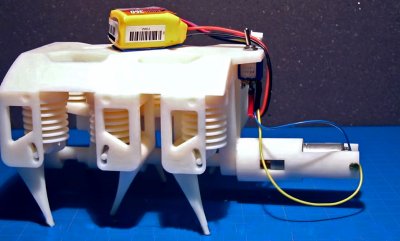3D printing in Ghana can be considered to be in transition from the early to middle stage of development. This is in comparison with other active countries such as South Africa or Kenya. Despite the slow development, the West African country has brought quite unique and interesting innovations to the 3D printing ecosystem.
When one looks at Ghana’s 3D printing landscape, the most outstanding story is the university students who built a 3D printer from electronic waste. The students identified as Klaks 3D took two weeks to build a 3D printer using electronic waste for the bulk of the components. The innovation was intended to enhance teaching and learning basics in schools, particularly in 3D printing. From an African viewpoint, this is encouraging and motivating and even from an environmental worldview, this could be an inspiration. The students approach aligns very well with the principle of zero waste: make a printer from waste and print objects at zero waste.
Another interesting development from Ghana’s 3D printing landscape is the building of a drone by students from a private university. The students at Ashesi University constructed the drone using 3D printed parts and actually posted a video on their Facebook wall showing its flight. The drone is still more of a prototype but is more than good enough to further democratize drone technology. It is not known how long it took the students to build the drone but at least it’s a very positive start.
A very recent development worth mentioning is the partnership between Tech Era (award winning tech non-profit based in Ghana) and Dextra (Canadian based social enterprise and engineering company) for the creation of an Assistive Technology Makerspace in Ashesi University. The purpose for this development is to create and develop teaching and learning materials for learners with disabilities. Using 3D printing, students working in the Ashesi D-lab will design and develop learning materials for assistive technologies for children with disability. This is a promising development for children with disabilities as they will be able to participate in STEM related programs and make use of the assistive technologies in the future. One can only imagine the joy and relief such an initiative will bring to both the parents and their children with disabilities. The thought of developing learning materials so that they are equipped to be able to participate in the economy is more than blessing if one would put that way. This initiative by Ghana should surely spread to the rest of the continent. I am positive it will make a massive impact not only in Ghana but the continent at large.
Ghana is still treading the journey in utilizing 3D printing technology and with the above mentioned developments they are getting there. The West African country is also on a positive growth phase and so a market based approach would work for Ghana considering the kind of development that it wishes to pursue with 3D printing technology. Delivery of products and services to underprivileged and undeserved markets is very important and required for economic growth and improving standard of living. Funding and resource mobilisation may be important for Ghana in its pursuit to applying 3D printing. The young generation has great interest and are enthusiastic with an eagerness to provide solutions. This is a very healthy condition for 3D printing and an innovative community will emerge as the technology develops.
